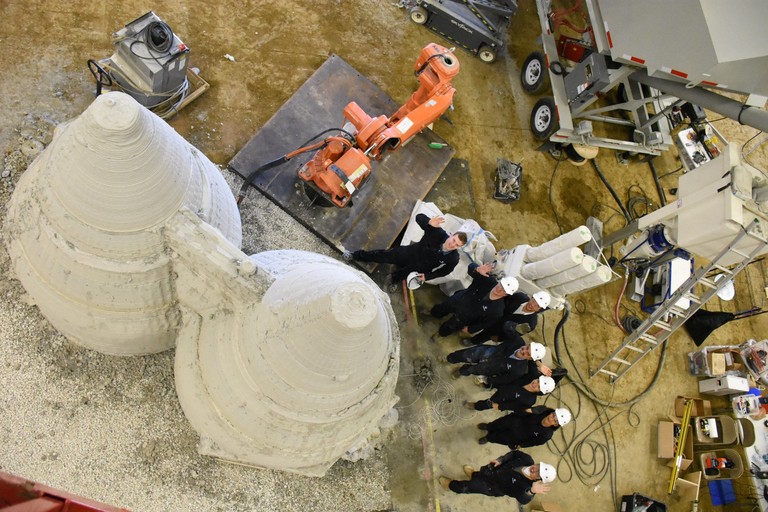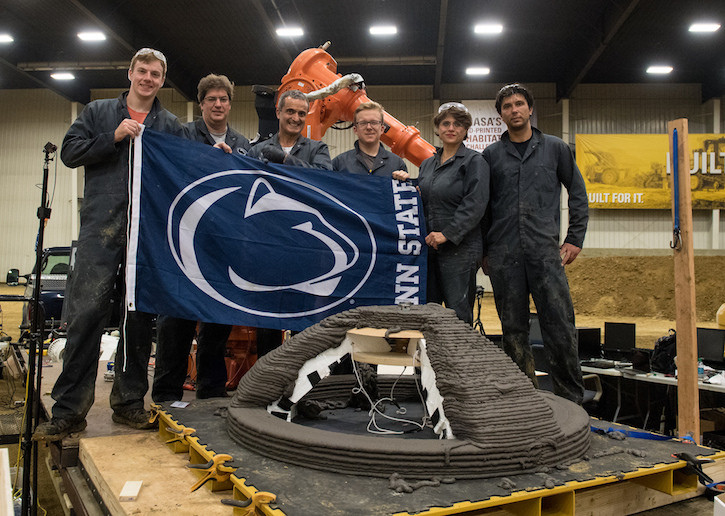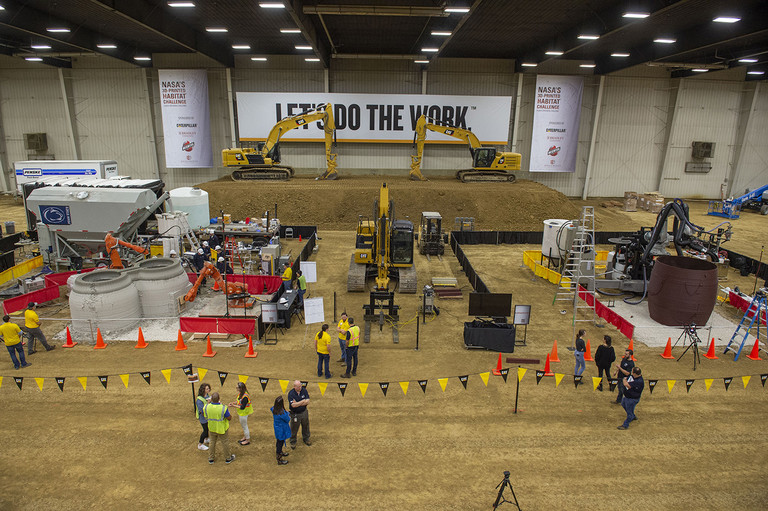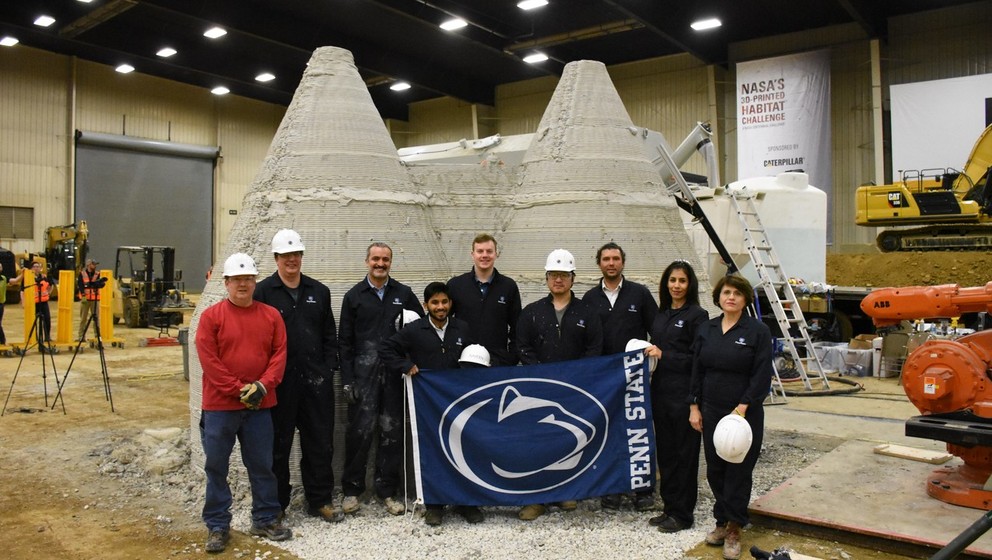In 2017, just a few months before his death, theoretical physicist Stephen Hawking said humanity only has about 100 years to escape Earth. Even though we have seen the signs alerting us that life on this planet is ailing, with plastic conquering the oceans, thousands of animal species becoming extinct and a shortage of water that affects every continent, the conversion towards a fully sustainable lifestyle that could revert the feeble state of our home is just not happening. So, many are actually paying attention and heeding Hawkins advice, trying to look for other “celestial bodies”, to conquer. One of the first to announce they were looking for volunteers to travel to the red planet was Mars One back in 2013, with over 200,000 people from 140 countries applying for a one-way ticket to join a human settlement on Mars by 2023. Millions of dollars later, Mars One went bankrupt showing us all how challenging developing the technology for Mars would be. Happily, they are not the only ones, four years ago, NASA outlined a plan to land humans on the surface of Mars by 2030, and world-renowned investor Elon Musk already has a timeline for colonizing Mars. The race is on to develop the technology, space shuttles, and medicine that will take the first settlers. One key challenge is housing of course, which is why NASA hosted the 3D printing habitat challenge, a four-part massive event that began in 2015 and created a competition among citizen inventors to use readily available and recyclable materials to print habitats useful for Mars colonization. Additionally, these discoveries in science and technology can also be adapted to improve life on Earth. During the final phase, runner up team Pennsylvania State University of University Park, was awarded $200,000 for their work. The interdisciplinary team of students and faculty from the Colleges of Arts and Architecture, Engineering, Agricultural Sciences, and the Materials Research Institute, have worked arduously during the last few years on this challenge and in the process, they engineered a breakthrough that moves forward 3D printing construction research and pushes the team closer to the goal of creating sustainable housing on Earth.
The four-phase competition requires entrants to develop advanced 3D printing technology, including the mechanical elements of the printer and a cement mixture using indigenous materials, to produce a structurally sound habitat that can be 3D printed by NASA’s space explorers on Mars. During the final phase, which took place on the first week of May, and after 30 hours of 3D printing, with nearly 200 spectators gathered at Caterpillar Edwards Demonstration and Learning Center in Peoria, two teams competed side by side, PennStateDen@Mars (the only university team in the competition) and AI SpaceFactory, culminating with the final print of each team’s structure. And although the Penn State team didn’t win phase-three of the competition, they returned to University Park having developed 3D printed home construction technology that could impact construction or help rebuild areas ravaged by natural disasters.
“Printing an enclosed roof has never been done before,” said José Duarte, Penn State team leader and director of the Stuckeman Center for Design Computing. “It was an amazing feeling and the success really highlighted the collaborative nature of the team. We had big dreams and because of everyone involved, they became a reality. We definitely feel a sense of social responsibility with this research. We are dealing with an environment quite different than ours.”
NASA’s encounter has generated many experiments, challenges and innovative results, helping 3D technology advance into uncharted territory, and Mars or any other planet humans intend to inhabit in the future will be a difficult endeavour. Mars is a rocky planet with volcanoes, canyons, limited access to water and a very thin atmosphere made of carbon dioxide, nitrogen, and argon. It’s similar to Earth in some ways, but you might need to suit up before wandering around the terrain, let alone try to build your own home. According to NASA it’s a tough place to live, but thanks to the knowledge and understanding gained through these competitions, we might get a little bit closer to conducting live printing experiments on site.
Associate professor of architecture and fellow team leader, Shadi Nazarian, also believes that the technology could be life-changing for many people:
“Imagine an area that was devastated by a tornado; this type of technology could be sent to that area and shelters can be immediately printed for those who lost everything. This thinking drives our research and feels much more attainable with our latest achievement. The applications of the materials and techniques that we and our competitors have developed are many, including immediate possibilities for building with materials that are gentler to the environment, use indigenous and recyclable materials, and withstand harsh conditions here on Earth and beyond,” Nazarian suggested.
The Penn State team, led by Duarte and Nazarian, was originally selected to take part of the competition from an initial entry pool of 77 teams. PennStateDen@Mars was one of only five teams who qualified to participate in the Centennial Challenge. In both phases of the contest, the participants had to 3D print structural habitat pieces in no more than four days, that were evaluated and then crush-tested on site, using some of Caterpillar’s most overwhelming construction machines. During the event, the team faced the challenge of creating robots to build the habitat. The team was very successful, finishing in second place in phase two and second and third place in construction levels one and two of phase three of the competition, generating nearly $300,000 in prize money.
The PennStateDen@Mars entry to the competition was based on previous research aimed at developing functionally graded materials and verifying the possibility of designing and constructing seamless buildings, which can have a significant impact on architectural language and building processes. They further developed additive-manufacturing technology to 3D print habitats using a specially formulated concrete made from materials that can be found on Mars. But Penn State being selected for this challenge has also a lot to do with their experience and innovation in 3D printing. They have many 3D printing labs on campus, like the Maker Commons, which houses a large-scale printing installation of 32 desktop 3D printers as well as the Invention Studio; university researchers delved into 4D Printing with Wood Composites for architectural applications, while a Penn State startup, Trimatis LLC, hopes to help the planet with recycled filament and the university also created VenturePointe, a new startup incubator for urban campus Penn State Shenango, complete with 3D printers. Both Nazarian and Duarte have been doing research with materials and 3D printing in the past, resulting in the development of innovative and graded material interfaces, which would enable the design of seamless shelters and impermeable bonds between glass and geopolymer concrete to protect individuals and the climate inside the habitat.
“The Mars competition has given us the opportunity to expand our understanding of 3D printing in ways we didn’t consider,” Nazarian said. “The result has been breakthroughs that can fundamentally change concrete construction. For example, 3D printing does not require formwork, which consumes much of the cost and labor in this industry. I’m excited about how this research helps advance the construction technology that is needed to create sustainable housing options.”
Team members focused their efforts in developing a novel concrete formulation, advancing 3D printing processes, and designing the overall 3D printing system necessary to print large structures. According to Penn State, the production of the geopolymer binder used in the formulation of the concrete designed by the team does not emit carbon dioxide into the atmosphere, unlike the production of the most common types of cement. Last year, assistant professor of civil engineering at Penn State, Alexandra Radlinska, along with NASA launched an experiment, the Microgravity Investigation of Cement Solidification – Multi-use Variable-gravity Platform (MICS-MVP), to examine cement samples aboard the International Space Station, which could have significant benefits for humans living on Earth and, eventually, the moon and Mars. Processing the samples provided with the fundamental baseline and insight regarding cement solidification in extraterrestrial bodies such as Mars.
The 3D Printed Habitat Challenge will resume next year and PennStateDen@Mars team is ready to advance the additive construction technology needed to create sustainable housing. In the meantime, they are looking to showcase their breakthrough in 3D printing for housing on campus, where a 3D printed tiny house could be constructed, which, according to the university, will be a fully sustainable building and offer a glimpse into the future of home construction.
Additive Manufacturing is being used widely to develop sustainable housing options. With countries like Singapore busy at work 3D printing public housing, as well as INNOPrint 3D, a French 3D printer that (unrealistically) claims it can print emergency housing in 30 minutes, looking to print homes for the first settlers to colonize Mars seems like the right direction for the technology. Many innovators, companies and governments are passionate about life on other planets, and Mars has qualities that experts consider similar to Earth, with challenges picking up the pace of 3D printing technologies used in construction, it might not be long before 3D printers are being shipped to Mars for some of the first construction experiences in outer space.
[Images: NASA]Subscribe to Our Email Newsletter
Stay up-to-date on all the latest news from the 3D printing industry and receive information and offers from third party vendors.
You May Also Like
3D Printing News Unpeeled: A $3000 SLS System, Construction Subsidies and Parameters
The Housing Affordability Crisis is one of Canadian President Trudeau’s biggest issues. Now the government has made subsidies available, including scaling new technologies, 3D printed housing and libraries of reapproved...
“Bundled Light” Enables High Quality Plastic 3D Printing from LEAM
Naturally, we expect current 3D printing methods to continuously improve, but it continues to do so in the most surprising ways. The latest development comes from LEAM, a startup spun...
Each to Their Own: Exploring Creality’s Latest Ender Trio as the Company Strengthens Its Commitment to 3D Printing Advocacy
Creality has reaffirmed its commitment to promoting 3D printing. The launch of the Ender-3 V3 SE, Ender-3 V3 KE, and Ender-3 V3 showcases the company’s dedication to catering to diverse...
3D Printing News Briefs, March 23, 2024: AM in the US Coast Guard, Navy, & More
In today’s 3D Printing News Briefs, we’re discussing the use of 3D printing in various branches of the military, including the U.S. Coast Guard, the U.S. Navy, and the German...



































